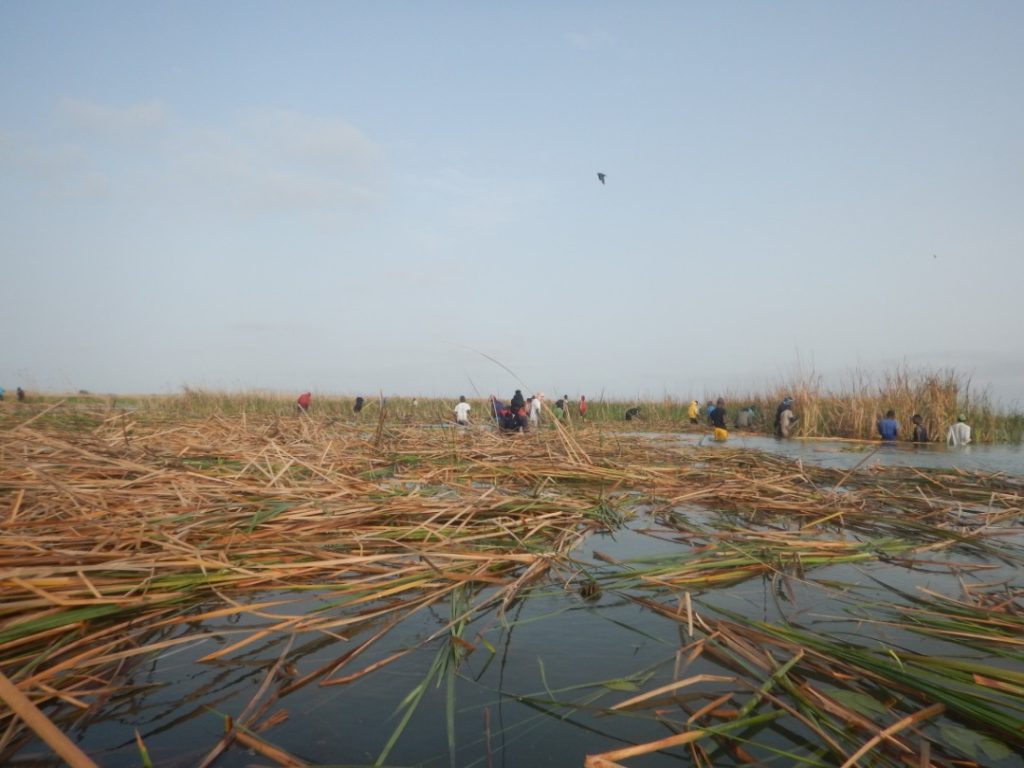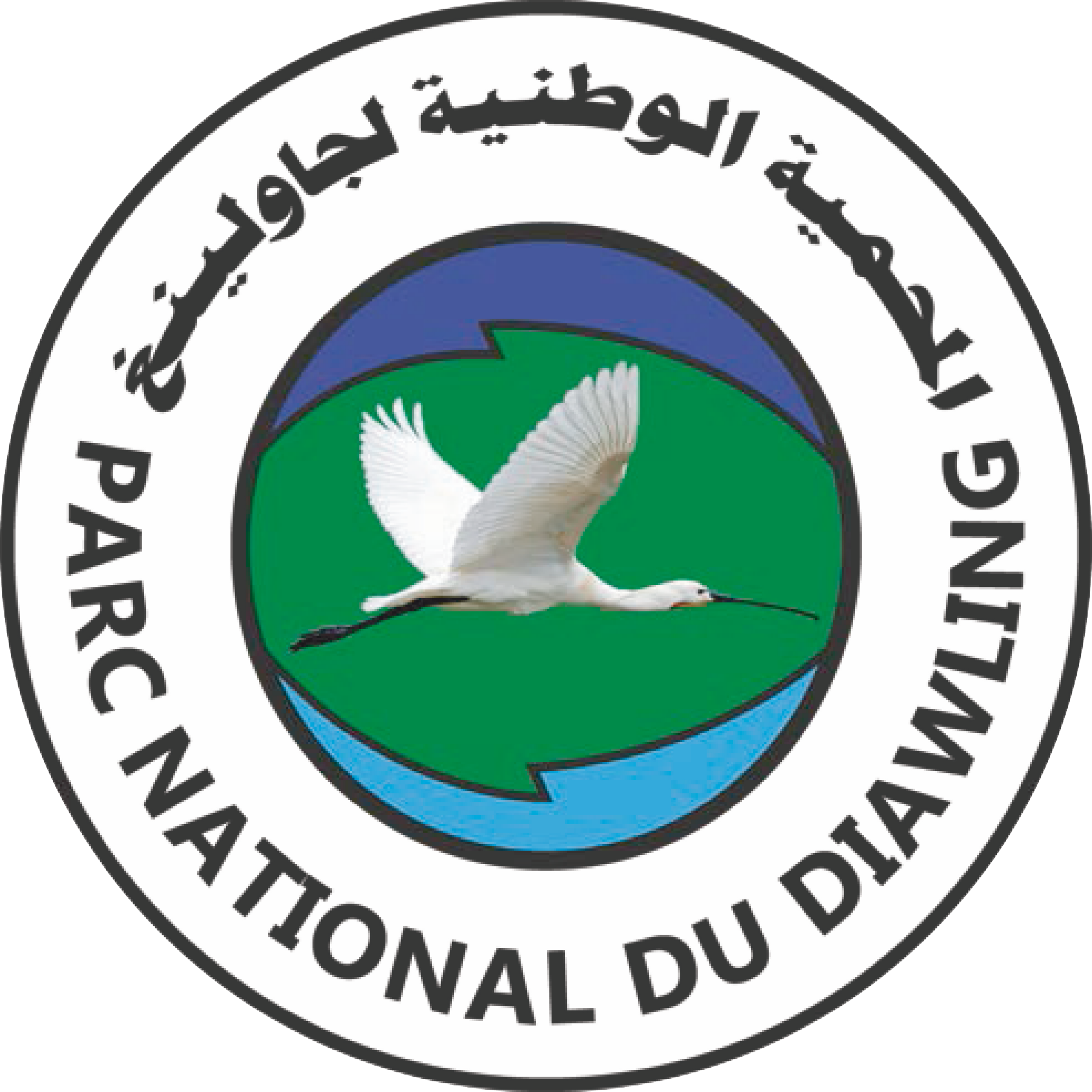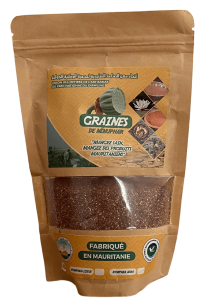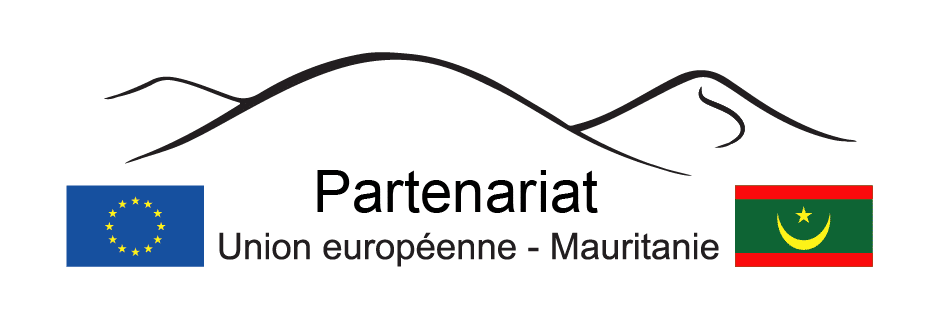Fight against invasive species
The PND area is not immune to the phenomenon of Typha invasion at the mouth of the Senegal River. The progression of this aquatic plant was previously naturally controlled by the seasonal alternation of fresh water from the Senegal River and salt water from the ocean going up the river bed in dry periods to beyond Rosso. The construction of the Diama dam on the river blocked this natural phenomenon and caused the exponential development of this plant.
A weakened environment causing the development of invasive plants
In the early 70s, a drought had raged in the Sahel countries and particularly in Mauritania, leading to the destruction of plant cover and a drop in productivity (agriculture, livestock, fishing), in the Mauritanian lower delta among others. This situation was worsened by the construction of the Diama and Manantali dams, by the Organization for the Development of the Senegal River (OMVS).
The Diama dam having remained closed for almost 10 years (until 1994), the waters of the estuary of N'Thiallakh, located in its downstream part (outside the PND, currently), have become hyper-saline and the former floodplains tended to evolve into sebkhas (Hamerlynck, 1996). Fishery resources have declined significantly while estuarine vegetation has almost disappeared (Diawara, 1997). Also, the hydrostatic weight of this dam caused the rise of the water table, whose waters of lagoon origin, have compromised the development of vegetation characteristic of certain low-delta biotopes.
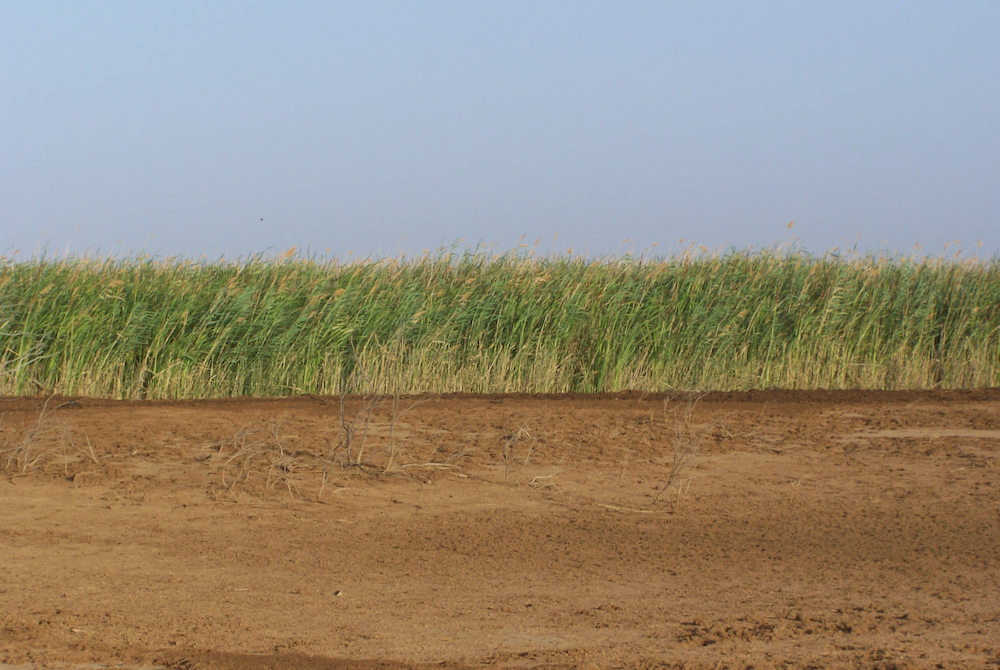
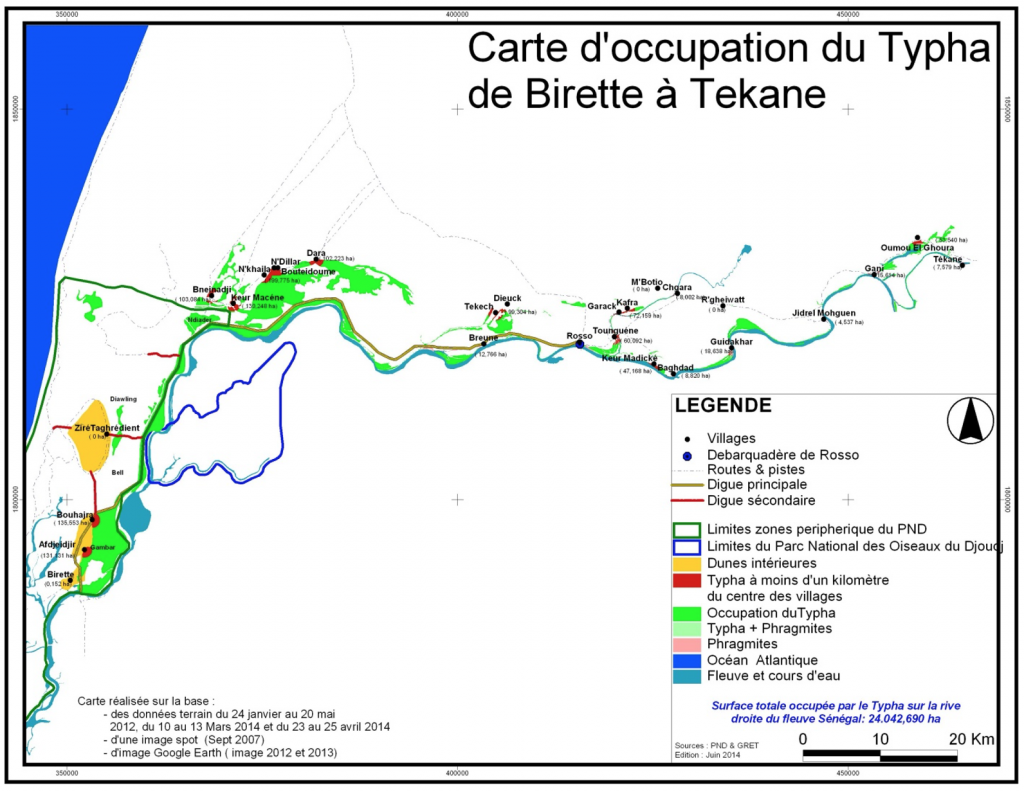
La stagnation of the large quantity of fresh water available at the Diama reservoir favored the proliferation of invasive aquatic plants (Typha australis, Salvinia annoyed, Jussea repens, etc.) thus causing a considerable loss of biodiversity and a drop in fish production. By invading all bodies of open water, these plants obstruct the migration routes of fish, particularly coastal shrimp.
These disruptions to the natural environment have had an even more negative impact on the village economies (basically based onexploitation of natural resources) that they come after a period of climatic deterioration which decimated herds and compromised rainfed agriculture (Duvail, 1996).
The development of typha in bodies of water had been feared since the definition of the first flood scenarios of the PND.
Impacts of Typha development
Typha has grown by an average of 1400 ha per year between 1956 and 2001 (source: SOGED) and occupied 2001 ha of the Senegal River valley in 62. In the target zone, nearly 670 ha are estimated to be invaded by typha (source: SAED 9000 and projections). This is all the more damaging as it is largely a protected surface, the Diawling National Park presenting extremely rich ecosystems, whose biodiversity is directly threatened by the invasion of Typha.
In addition, Typha seriously harms economic activities: it prevents fish farming activities (eutrophication) and reduces access to the river forcing fishermen to sometimes travel long distances (more than 5 km).
It strongly limits the agricultural and market gardening activities because it invades irrigated agricultural areas colonizing canals, irrigation drains and plots of irrigated areas.
It also hinders traditional gathering and craft activities, by reducing the surface areas of Sporobolus robustus, used for making traditional mats, water lilies, with great nutritional value, or various medicinal plants and seeds.
Typha therefore eliminates a number of jobs and resources in the lower valley of the Senegal River.
Finally, the proliferation of typha has health consequences for the inhabitants of villages located near Typhaies. THE pollen and Typha flowers fly and spread in large quantities, causing damage to crops and itching for the villagers. Furthermore, the Typha harbors harmful species for villagers (snakes, crocodiles) and for crops (insects, seed-eating birds). It also causes intestinal diseases in livestock who feeds on it. But above all, the deterioration of water quality as a result of colonization by Typha represents a direct threat to human and animal health (resurgence of water-borne diseases, proliferation of mosquitoes, etc.).
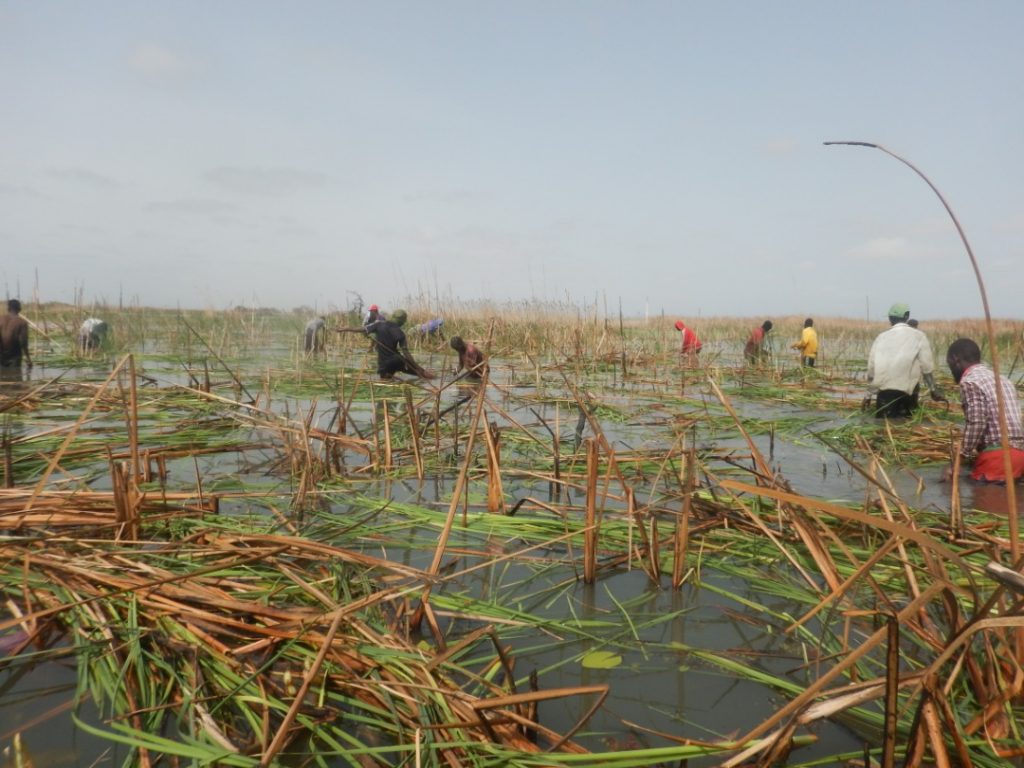
Actions to combat Typha
As part of the implementation of the Park Management Plan, it is planned to fight against this invasion which is likely to modify the ecological characteristics and value and economic aspects of these basins.
In order to reduce the impacts of this species on wildlife and activities, the PND launched in 2018, in close collaboration with these technical and financial partners (BACoMaB, ABS-UE and WACA), a mechanical control action for the regulation of invasive species in the Diawling National Park, with a view to restoring a better balance in these ecosystems.
This intervention concerns the clearance of more than 150 hectares in the two basins of the Park, with two main objectives : 1. Improve the living conditions of populations in rural areas of the Senegal River delta; 2. Contribute to the protection of plant and fish production areas by regulating invasion in these areas.
The results of this intervention are among others: the opening of ponds to accommodate more birds; a reception area for ichthyofauna and reptiles; a space for the development of species with high economic value such as Sporobolus or water lilies; a fishing area for local fishermen.
In addition to being a priority action for the economic survival of households, who regularly cut off the Typha to limit its nuisance on their socio-economic activities, its transformation into coal constitutes a win-win solution for the populations and the sustainable management of natural resources of the park.
